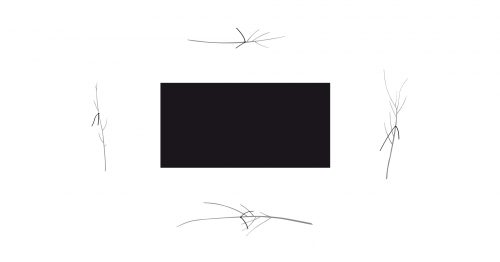| 2018. May. 22. | 18:00 |
Saturn’s Trees
To understand human fate – regardless of time or culture – we often turn to the world of flora: almost involuntarily we borrow terms from the world and life cycle of trees to express periods in human life, such as the expressions offspring, budding, blossomed, withered, etc. In areas in which German is spoken, beginning in the 16th century, bare, dead trees were referred to as the trees of Saturn, an idiom tied to the association of Saturn with an introversive, contemplative personality.[1] “(The melancholic [Saturnine]) does not regard the unknown as something which must sooner or later be tracked down with appropriate training, but rather as the innermost centre of human existence and thinking.”[2] Similarly, the works of Dia Bögi are neither answers nor explanations. Rather, in the words of the artist, they are “attempts to accept irresolvable uncertainty”.
The central element of the exhibition is an area of the ground covered with coal dust, which recalls the gesture of cutting holes in frozen fishing ponds. Carbon, the fundamental element of all organic compounds, ensures the substances necessary for trees to be solid. Cutting holes in the ice, in contrast, is an act of intervention by man which disrupts the seemingly solid but in fact fragile layer. Four branches inserted into the ground draw attention to the border of the coal-covered area and the hidden dangers in the surface, which is thought to be solid enough to walk on. These branches, which appear to be on the brink of budding, were cut by Bögi from trees in the forest surrounding a lake. They are sprigs which, in contrast with the other branches in the wild, for some reason were thwarted in their springtime revival. They never grew leaves, and in their current state, stuck in “ice,” they have no chance of rebirth. However, passing and rebirth are not mutually exclusive, as the decay of a Christmas tree in Beuys’ studio for four years drew attention to another life cycle, the continuation of life in death.
The works presented in Dia Bögi’s exhibition Saturn’s Trees examine the reconciliation of rebirth, temporality, and passing.
[1] László F. Földényi: Caspar David Friedrich, Helikon, 1986, p. 4.
[2] László F. Földényi: A melankólia dicsérete (In Praise of Melancholy), Jelenkor, 2017, p. 30.

